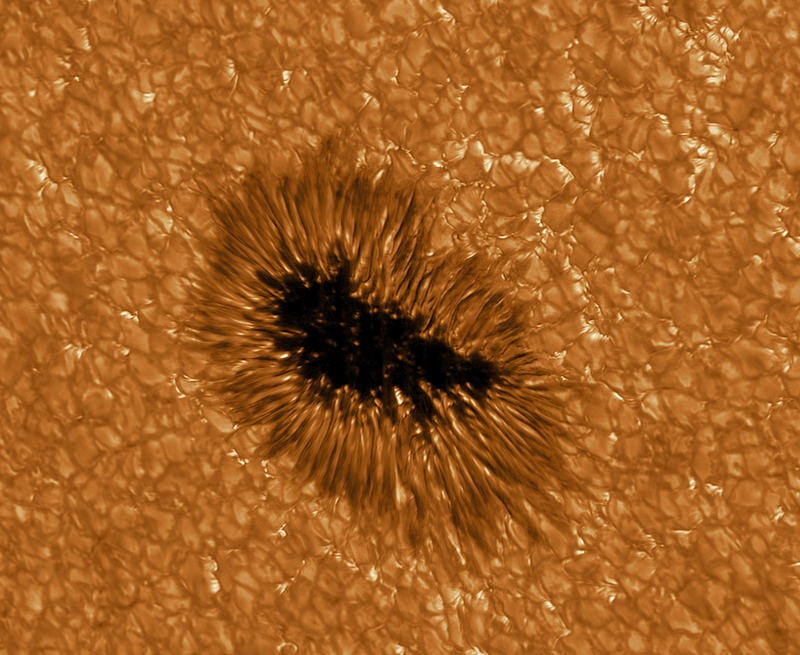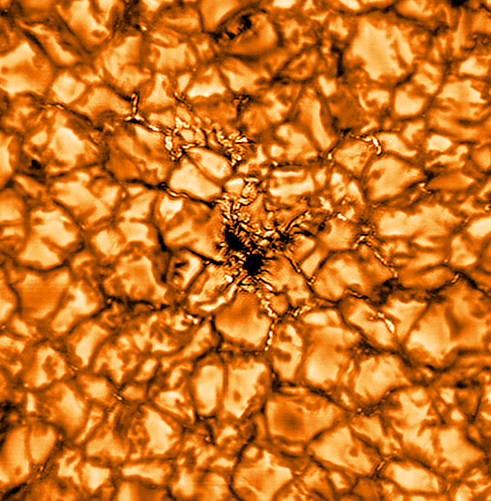Stunning new sun images show our star's popcorn-like magnetic field structure

Need a little more sun in your life?
German scientists have just finished upgrading a solar telescope called GREGOR at the Teide Observatory in the Canary Islands, and the result is a spectacular new set of images of our star.
"This was a very exciting, but also extremely challenging project," Lucia Kleint, a scientist at the Leibniz Institute for Solar Physics in Freiburg, Germany and lead researcher on the project, said in a statement. "In only one year we completely redesigned the optics, mechanics and electronics to achieve the best possible image quality."
Related: World's largest solar telescope produces never-before-seen image of our star
GREGOR began its observations in 2012 as Europe's largest solar telescope and the upgrade project began in 2018. The upgrades included work on the telescope's optics and control systems, repainting the observatory to reflect less light and interfere less with observations, and implementing new scheduling policies to improve the scientific output of observations.
All told, the telescope now allows scientists to capture features on the sun that are only 30 miles (50 kilometers) across, according to the statement. And since solar activity is currently on an upswing as the minimum point of the current 11-year solar cycle ends, there will be plenty for GREGOR to study.

"The project was rather risky because such telescope upgrades usually take years, but the great team work and meticulous planning have led to this success," Svetlana Berdyugina, an astrophysicist at the Albert-Ludwig University of Freiburg in Germany and director of the Leibniz Institute for Solar Physics, said in the same statement. "Now we have a powerful instrument to solve puzzles on the sun."
Get the Space.com Newsletter
Breaking space news, the latest updates on rocket launches, skywatching events and more!
The upgrades are described in a paper published Sept. 1 in the journal Astronomy & Astrophysics.
Email Meghan Bartels at mbartels@space.com or follow her on Twitter @meghanbartels. Follow us on Twitter @Spacedotcom and on Facebook.
Join our Space Forums to keep talking space on the latest missions, night sky and more! And if you have a news tip, correction or comment, let us know at: community@space.com.

Meghan is a senior writer at Space.com and has more than five years' experience as a science journalist based in New York City. She joined Space.com in July 2018, with previous writing published in outlets including Newsweek and Audubon. Meghan earned an MA in science journalism from New York University and a BA in classics from Georgetown University, and in her free time she enjoys reading and visiting museums. Follow her on Twitter at @meghanbartels.
-
rod Some solar telescope images here :) I note this in the report, "All told, the telescope now allows scientists to capture features on the sun that are only 30 miles (50 kilometers) across, according to the statement. "Reply
The angular resolution to see about 50 km on the Sun from a distance of 1 AU, ~ 70 mas or 0".07. That is some solar telescope. -
Helio It's hard to imagine that the average size of each of those granules -- the scale-like surface features -- are about the size of Texas.Reply
I'm guessing their 50km resolution comes when they are observing at around 400nm wavelength (based on my simple diffraction limit equation), which would explain the range of resolutions given since IR is also an important band observed.









